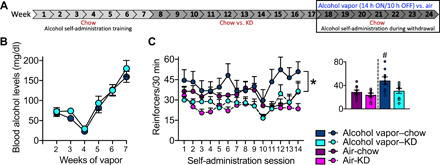Fig. 6. Operant alcohol self-administration and BALs in rats with a history of KD or chow diet.

(A) The rats were trained to lever press (fixed-ratio 1) for alcohol or water in 30-min operant sessions. Next, the rats were exposed to a KD or chow diet for 8 weeks. All rats were then given free access to chow for the remainder of the experiment. Half of the rats (alcohol vapor) were exposed to chronic (daily), intermittent alcohol vapor (14 hours of alcohol on followed by 10 hours off, alcohol withdrawal) for 7 weeks to produce alcohol dependence; the other half (air) were exposed to air without alcohol to serve as nondependent controls. The black rectangular box indicates when data shown in (B) and (C) were collected. (B) Rats with a history of KD or chow did not differ in BAL over the course of the alcohol vapor exposure. (C) Alcohol vapor–exposed rats with a history of chow diet (alcohol vapor–chow) self-administered significantly more alcohol during twice weekly self-administration sessions during withdrawal (6 to 8 hours after vapor turned OFF) than alcohol vapor–exposed rats with a history of KD (alcohol vapor–KD). *P < 0.05, alcohol vapor–chow > alcohol vapor–KD, regardless of self-administration session. Alcohol self-administration did not differ between the groups of air-exposed rats with a history of chow or KD (air-chow not different from air-KD). The inset bar figure shows the average of alcohol reinforcers that the rats earned in the last four self-administration sessions that corresponded to weeks 6 and 7 of alcohol vapor exposure. #P < 0.05, alcohol vapor–chow self-administered significantly more alcohol compared with all of the other groups.
